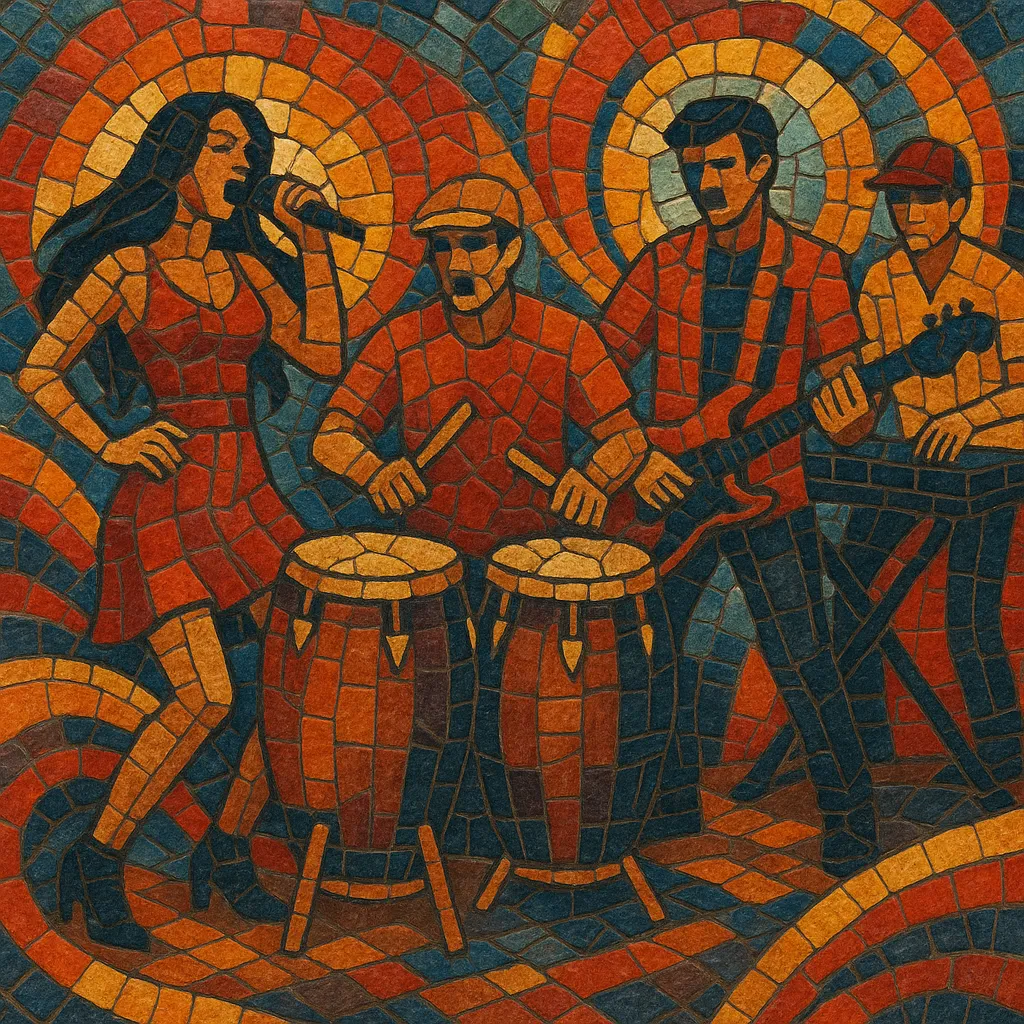Dangdut koplo is a high-energy, percussion-forward branch of Indonesian dangdut that took shape in East Java before spreading nationwide.
It is defined by the "koplo" beat: rapid, rolling kendang (double-headed drum) patterns that push the tempo, frequent double-time fills, and crowd-rousing breaks. Compared to classic dangdut, koplo favors faster BPM, denser syncopation, and arranger-keyboard riffs, often performed by large live roadshow bands (OM/Orkes Melayu) on open-air stages.
Vocals alternate between Indonesian and regional languages (especially Javanese), with lyrics about love, everyday life, and dance culture. The result is festive, dance-centric music that thrives in live settings, VCD-era recordings, and today’s YouTube/TikTok ecosystem.
Dangdut koplo emerged in East Java’s local party circuits (hajatan) and night markets, where Orkes Melayu bands experimented with faster tempos and more intricate kendang patterns. The term "koplo" is popularly linked to the era’s club/dance energy, and the style quickly distinguished itself from classic dangdut through its rolling drum breaks and relentless drive.
Mobile stage shows and the VCD market helped the sound travel across Java and beyond. Although not exclusively koplo, the early-2000s dangdut boom—alongside controversial, high-profile performers—drew attention to more energetic regional variants. East Javanese groups standardized the "koplo beat" and built huge live followings, turning local gigs into mass dance events.
YouTube uploads of live concerts by OM bands (e.g., SERA, New Pallapa, Monata, Adella) went viral, shaping repertoire, sound, and stagecraft. Singers like Nella Kharisma and Via Vallen popularized polished, keyboard-driven koplo arrangements and covers, bringing the style into mainstream Indonesian pop culture.
Koplo aesthetics now permeate "Pop Jawa" and campursari-influenced hits, with artists such as Denny Caknan and Happy Asmara bridging traditional, pop, and koplo sensibilities. Online platforms (TikTok/shorts) amplify dance challenges, call-and-response hooks, and live-performance clips, sustaining koplo’s role as Indonesia’s go-to party soundtrack.


